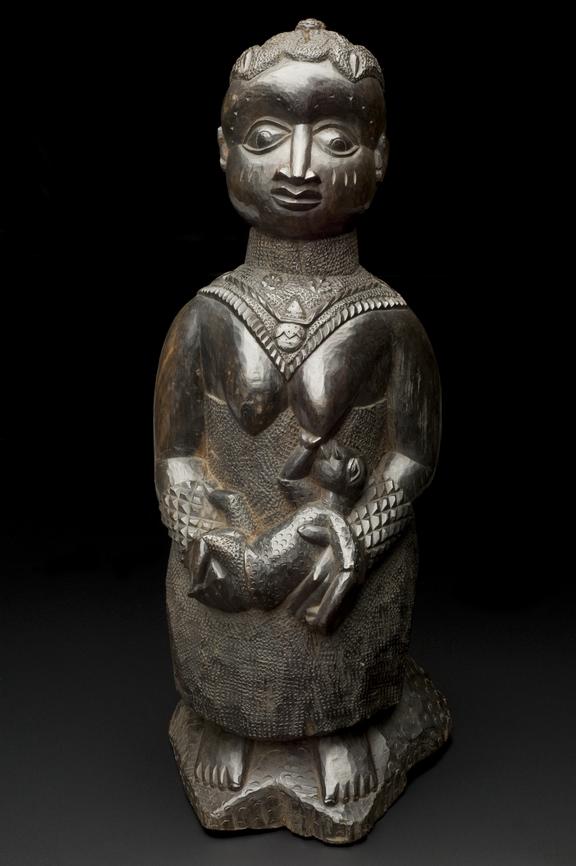


Carved ebony figure of seated woman suckling an infant, woman's face ornamented with tribal scarification, wearing an amuletic necklace, possibly represents Odudua, Earth Goddess in the Yoruba pantheon, probably Yoruba people, West African, 1890-1920
This carved statue of a breastfeeding woman reputedly comes from the Yoruba people of West Africa. It is made of a solid block of ebony. The woman is said to represent Odudua. She is an Earth Goddess and ancestral mother figure within Yoruba mythology. In either context the statue acts as a fertility symbol. These represent growth and healing in many African societies. They help induce pregnancy and ensure a safe delivery. The statue wears an amulet necklace. It bears the raised marks of scarification on her face. These raised scars are considered marks of great beauty within many African cultures.
Details
- Category:
- Ethnography and Folk Medicine
- Collection:
- Sir Henry Wellcome's Museum Collection
- Object Number:
- A131230
- Materials:
- ebony
- Measurements:
-
overall: 470 mm x 190 mm x 215 mm, 7.06 kg
- type:
- statue
- credit:
- Wellcome Trust (Purchased from Stevens)




